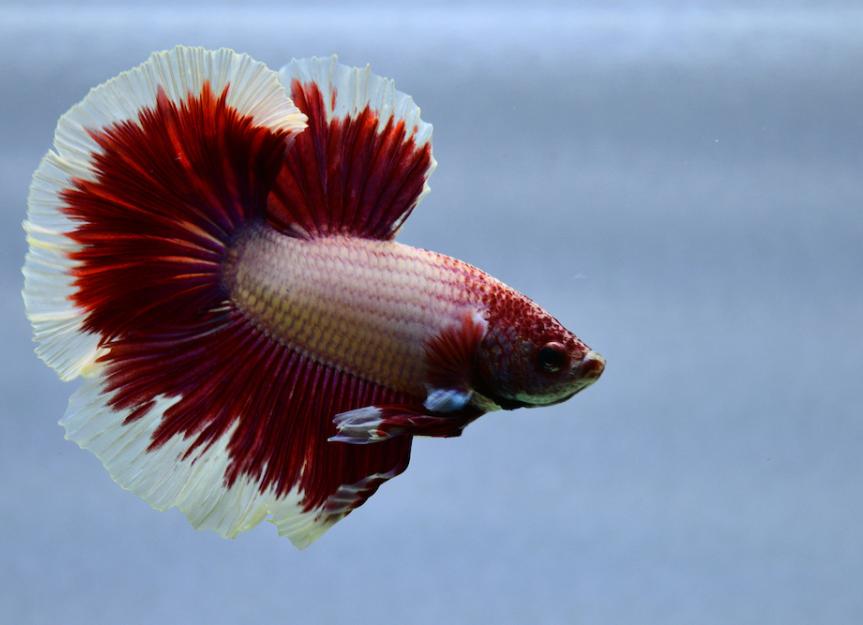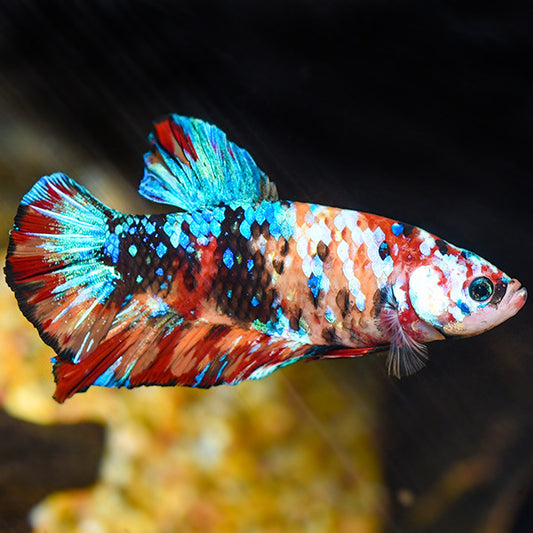Betta Fish Care: Crucial Tips for a Healthy And Balanced and Delighted Pet Dog
Betta Fish Care: Crucial Tips for a Healthy And Balanced and Delighted Pet Dog
Blog Article
Everything About Betta Fish: Recognizing Their Unique Demands, Habits, and the very best Practices for Optimum Care
Recognizing the distinct requirements and habits of Betta fish is important for any type of aquarist wanting to offer optimum care. These exciting animals, belonging to the warm waters of Southeast Asia, show distinctive territorial tendencies and require details environmental conditions to grow. From choosing the right container dimension to recognizing possible health and wellness concerns, different elements substantially affect their wellness. As we check out these elements further, the implications for both newbie and skilled fish keepers come to be increasingly obvious, raising concerns regarding how best to suit these amazing fish in our homes.
Betta Fish Overview
Although typically admired for their vibrant shades and moving fins, Betta fish, medically referred to as Betta splendens, are complicated creatures that require certain treatment to flourish. Originating from Southeast Asia, these freshwater fish are understood for their territorial nature and distinct actions. Betta fish display sex-related dimorphism, with men presenting much more brilliant colors and longer fins than ladies.
Their hostile tendencies, especially amongst men, necessitate mindful consideration when real estate them. Bettas are usually kept in single-specimen tanks to avoid territorial conflicts. They can exist together in harmony with specific suitable types in larger community tanks, provided the environment fulfills their demands.

To make certain ideal care, aquarists must comprehend their one-of-a-kind behavior attributes, dietary needs, and habitat requirements. betta fish. With appropriate attention, Betta fish can show their lively characters and prosper in a properly maintained aquarium setup
All-natural Environment and Environment
Betta fish thrive in a varied series of natural environments, mostly located in the superficial waters of Southeast Asia, consisting of rice paddies, swamps, and slow-moving streams. These settings are identified by warm temperatures, normally between 75 ° F and 82 ° F(24 ° C and 28 ° C ), and a pH level varying from 6.5 to 7.5, which is ideal for their health and wellness and wellness.
In their natural environments, Betta fish are accustomed to thick vegetation, providing both shelter and breeding premises. The existence of plants such as drifting water lilies and thick yards not just offers defense from predators yet additionally adds to the oxygenation of the water, which is essential for their respiratory system requirements. Furthermore, these atmospheres typically have locations of still water, allowing Betta fish to display their natural behaviors such as bubble nesting.
Recognizing the natural habitat of Betta fish is critical for aquarium enthusiasts. Duplicating these problems-- via water temperature level, pH equilibrium, and the incorporation of live plants-- can considerably improve the general wellness and long life of these exciting fish, ensuring they grow in a home aquarium setting.
Social Habits and Communications
Comprehending the social behavior and communications of Betta fish is vital for successful fish tank monitoring. Betta fish, or Siamese combating fish, are known for their distinct behavior characteristics, characterized mostly by territoriality and hostility.
Alternatively, female Bettas exhibit much less hostile actions and can exist side-by-side in groups, called sororities, if presented appropriately. It is critical to check their visit this website communications carefully, as hierarchy and dominance can lead to disputes. Recognizing the dynamics within her response a Betta community is essential; developing concealing places and making certain sufficient area can minimize aggressiveness.
Additionally, Betta fish might additionally present curiosity and social habits towards other varieties. While they can exist side-by-side with specific non-aggressive tank friends, it is vital to select suitable varieties to prevent stress and anxiety and aggressiveness. On the whole, identifying these social interactions is vital to fostering an unified aquarium setting for Betta fish.
Essential Treatment Standards
Providing proper look after Betta fish is vital to their wellness and wellness. To guarantee a flourishing setting, it is vital to preserve optimum water problems. The water temperature level should be maintained between 76 ° F and 82 ° F(24 ° C to 28 ° C), while pH degrees need to range from 6.5 to 7.5. Regular water adjustments-- roughly 25% weekly-- aid maintain water high quality.
Betta fish require a suitable tank dimension; a minimum of 5 gallons is suggested to provide adequate space for swimming and hiding. Include decors and plants to produce a revitalizing environment, however stay clear of sharp things that can hurt their fragile fins.

Last but not least, guarantee the tank is outfitted with a filter to maintain the water clean, but make use of a gentle filter to avoid strong currents that can worry the fish. By complying with these important treatment guidelines, proprietors can advertise a healthy and balanced and dynamic Betta fish.
Common Wellness Issues and Solutions
In the treatment of Betta fish, understanding of usual wellness problems is essential for maintaining their health. One common issue is fin rot, frequently triggered by bad water top quality or microbial infection. Signs include frayed or tarnished fins. To treat fin rot, enhance water conditions and consider making use of a broad-spectrum antibiotic.
One more usual condition is ich, a parasitical infection characterized by white areas on the fish's body (betta fish). Therapy includes increasing water temperature and navigate to this site including fish tank salt to the storage tank, as this can aid remove the parasite
Swim bladder condition is additionally often observed, leading to buoyancy problems. This problem may arise from overfeeding or bowel irregularity. A fasting period of 24-48 hours, followed by a diet of blanched peas, can give alleviation.
Lastly, bettas might struggle with velour illness, suggested by a gold dust-like look on their skin. Therapy commonly requires medicine specifically developed for external parasites, along with boosted tank health.
Normal monitoring of water criteria, preserving a tidy atmosphere, and supplying a balanced diet plan are critical safety nets. By resolving these health and wellness concerns without delay, Betta fish can lead healthier, a lot more vibrant lives.
Final Thought
In summary, effective betta fish treatment requires an understanding of their one-of-a-kind needs and habits. Regular surveillance of health and wellness and water high quality, along with a balanced diet plan, adds to the long life and vibrancy of betta fish.
Report this page